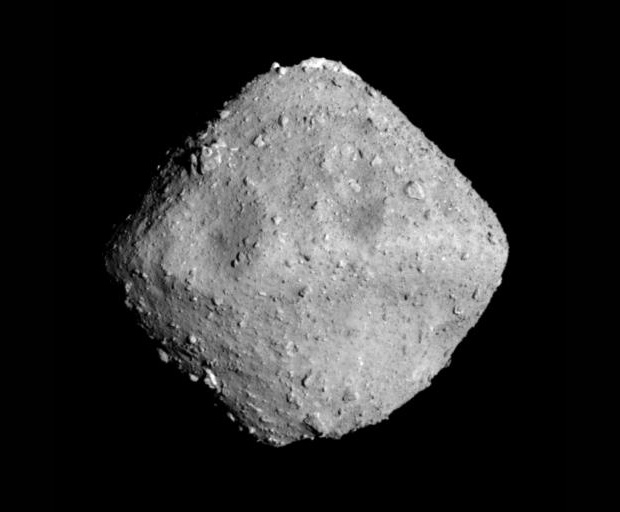A Japanese spacecraft is just hours away from a historic attempt to land two tiny, hopping robots on the big asteroid Ryugu, and you can see near real-time photos of the spaceflight action.
The Hayabusa2 probe, which has been orbiting Ryugu since late June, is scheduled to deploy a pair of 2.4-lb. (1.1 kilograms) "rovers" between midnight and 12:30 a.m. EDT Friday (Sept. 21; 0400 to 0430 GMT).
The Hayabusa2 mother ship has already begun descending toward Ryugu in advance of the deployment, and the spacecraft is snapping photos of the asteroid for navigation purposes. And lucky us: The mission team and the Japan Aerospace Exploration Agency (JAXA) are posting these photos in near real time here: http://www.hayabusa2.jaxa.jp/en/galleries/onc/nav20180920/
At the moment, images are coming down to Earth every 29 minutes, according to the time stamps. Ryugu gets larger and larger in each successive photo as Hayabusa2 gets closer and closer to the 3,000-foot-wide (900 meters) space rock.

The two little disk-shaped robots that will soon separate from the orbiter are called MINERVA-II1A and MINERVA-II1B. Each one measures 7 inches wide by 2.8 inches tall (18 by 7 centimeters) and is packed with scientific gear, including temperature and optical sensors and a suite of cameras. (There are seven cameras spread across both robots, JAXA officials have said.)
Though the Hayabusa2 team calls them rovers, these little guys will hop, rather than roll, from place to place on Ryugu's surface, gathering a variety of data along the way.
And more landings are coming soon. Hayabusa2 is scheduled to deploy a bigger lander called MASCOT in the first week of October and another small hopper, MINERVA-II2, sometime next year. The mother ship itself will also make several forays to the surface in 2019, to grab asteroid material that will be returned to Earth in December 2020.
Get the Space.com Newsletter
Breaking space news, the latest updates on rocket launches, skywatching events and more!
"MINERVA" stands for "Micro Nano Experimental Robot Vehicle for Asteroid." And about that "II" business: A MINERVA hopper flew aboard the original Hayabusa mission, which arrived at the asteroid Itokawa in 2005. The original MINERVA did not succeed in its landing attempt.
Follow Mike Wall on Twitter @michaeldwall and Google+. Follow us @Spacedotcom, Facebook or Google+. Originally published on Space.com.
Join our Space Forums to keep talking space on the latest missions, night sky and more! And if you have a news tip, correction or comment, let us know at: community@space.com.

Michael Wall is a Senior Space Writer with Space.com and joined the team in 2010. He primarily covers exoplanets, spaceflight and military space, but has been known to dabble in the space art beat. His book about the search for alien life, "Out There," was published on Nov. 13, 2018. Before becoming a science writer, Michael worked as a herpetologist and wildlife biologist. He has a Ph.D. in evolutionary biology from the University of Sydney, Australia, a bachelor's degree from the University of Arizona, and a graduate certificate in science writing from the University of California, Santa Cruz. To find out what his latest project is, you can follow Michael on Twitter.









